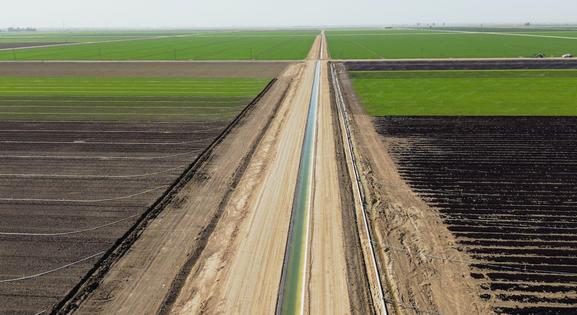Colorado River states bought time with a 3-year water conservation deal – now they need to think bigger
Published in Science & Technology News
Arizona, California and Nevada have narrowly averted a regional water crisis by agreeing to reduce their use of Colorado River water over the next three years. This deal represents a temporary solution to a long-term crisis. Nonetheless, as a close observer of western water policy, I see it as an important win for the region.
Seven western states – Colorado, Wyoming, Utah, New Mexico, Arizona, Nevada and California – and Mexico rely on water from the Colorado River for irrigation for 5.5 million acres and drinking water for 40 million people. Their shares are apportioned under a compact negotiated in 1922. We now know, thanks to tree-ring science, that its framers wildly overestimated how much water the river contained on a reliable basis. And climate change is making things worse.
Some recent commentators have argued for revamping the compact. The lawyer in me shudders to think of the utter chaos that would ensue as states, tribes that were left out of the original agreement, and Mexico try to unwind settled expectations and create new ones.
In my view, the agreement announced on May 22, 2023, strongly repudiates the need to revamp the compact. Seven states were able to finesse an agreement that will ultimately result in significant changes to the legal documents collectively known as the Law of the River, without the need to begin again. The next step – a broader, longer-lasting overhaul of the compact – will be even more challenging.
The Colorado River, the lifeblood of the U.S. Southwest, faced the prospect of going dry if its two largest reservoirs – Lakes Mead and Powell – hit dead pool, the level at which no water flows through their dams. Several forces led to this catastrophic prospect.
First, the 1922 Colorado River Compact and other elements of the Law of the River dole out rights to more water than the river provides.
Second, a historic drought that commenced in 2000 has caused water levels in the reservoirs to plummet by 75%.
Third, climate change has reduced the flow in the river by more than 1 million acre-feet. (One acre-foot is the amount of water required to cover an acre of land to a depth of 1 foot – about 325,000 gallons.) Evaporation off the surface of the reservoirs annually claims in excess of an additional 1 million acre-feet.
This year’s snowpack, historic by any measure, offers a year or two of relief from hitting dead pool. However, one wet year doesn’t alter the trajectory of climate change or the level of reliable flows in the river over time.
State water managers clearly understand the problem and have taken significant but insufficient steps to conserve water. Each state thinks the others should do more to solve the problem. Negotiations, sometimes acrimonious, have stalled.
...continued








Comments